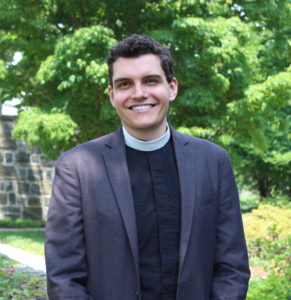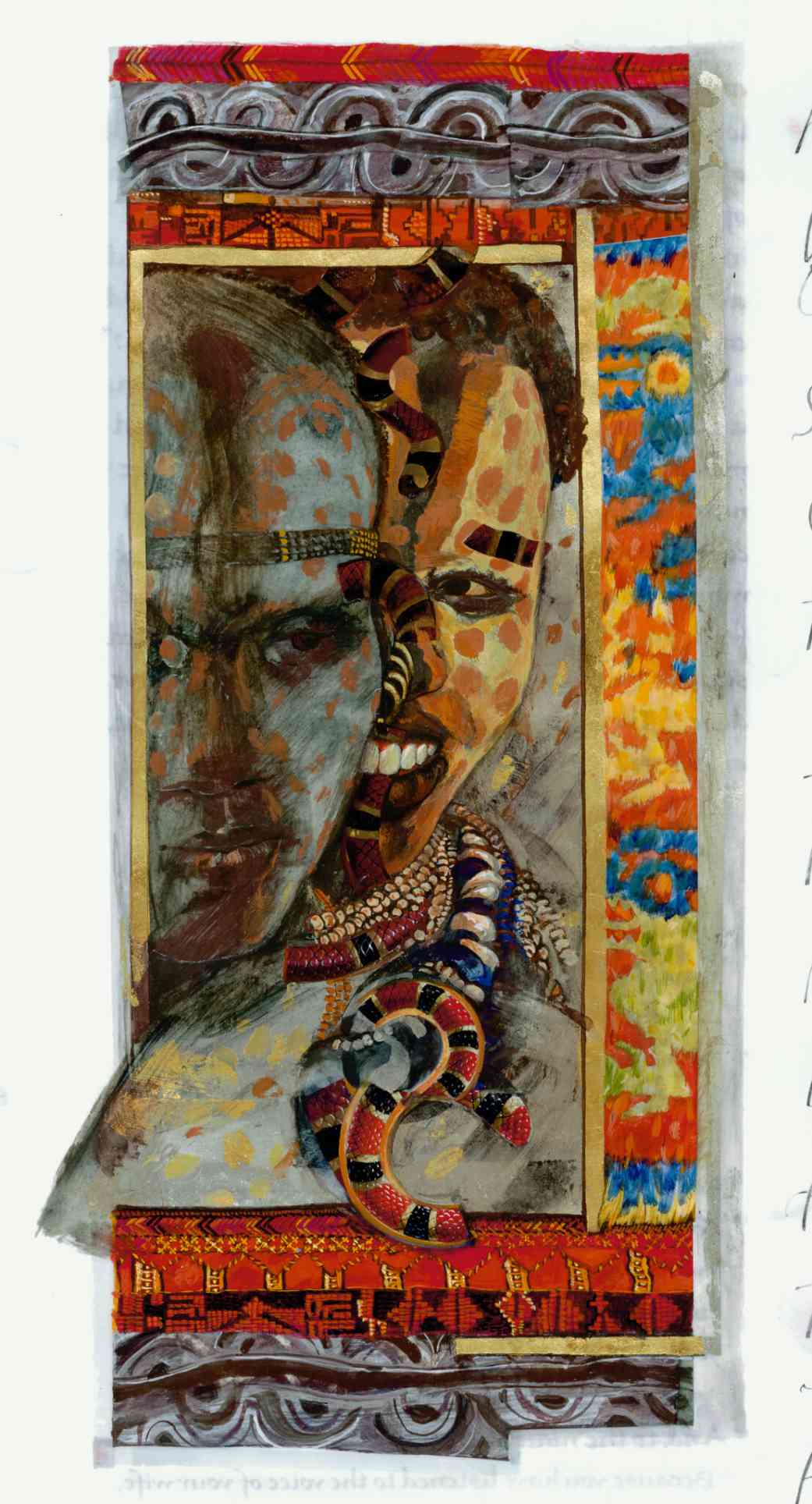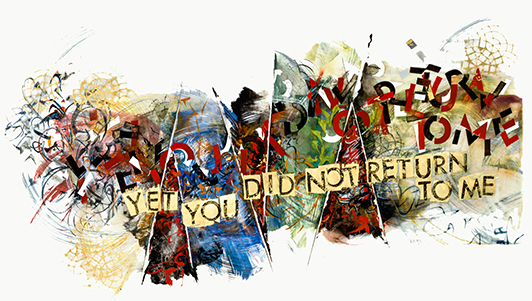First Person: The Bible Goes Digital During COVID-19
Saint Luke’s Parish deftly moved Lenten course online in response to the pandemic
Saint Luke’s Parish is an Episcopal “community of faith, prayer, fellowship and service” based in Darien, Connecticut. Through Saint John’s University’s “A Year With The Saint John’s Bible” program, the parish scheduled a series of events, many of which coincided with the liturgical calendar. In this latest edition of The Scribe, The Reverend Derek Stefanovsky, Saint Luke’s assistant rector, shares the community’s Lenten experience with the Bible in the midst of the world’s pandemic and our nation’s racial strife.

The Lenten Social Justice Challenge
Back in 2019, when we first scheduled a 2020 Lenten Bible study on social justice as seen in The Saint John’s Bible, we found ourselves nervous, but excited. Little did we realize how much the world would change by the time the course was over, and even more so in the months just beyond.
What we did know when first creating this course was that our parish had a large population of relatively wealthy, overwhelmingly white parishioners who — at least on first impression — were not naturally inclined to be interested in, or vocal about, social justice. Most of those who attended our Tuesday night education series did not have school-aged children and were a generation or two older. We also knew that The Saint John’s Bible would be a fantastic vehicle to explore somewhat abstract concepts, such as “the ethical imagination” or “beautiful persuasion.”
The illuminations of The Saint John’s Bible are able to address issues of the day, incorporate culture and raise questions of justice, while speaking to other faith traditions. It was the very nature of the illuminations and the questions they provoked that enabled our discussion on how to live as Christians. Furthermore, we were able to emphasize the intrinsic value of all people and imagine how society might be constructed in a way where all are able to meet their needs and allow for their full participation in society.
Responding to COVID-19
When we started the series at the beginning of Lent, we met in person and used our Gospels and Acts volume to focus the discussions. Because of its beautiful physical presence, there was an unspoken feeling that we should give greater weight to the illuminations we could engage with directly on the pages.
But we were not limited to just those illuminations in Gospels and Acts. Saint John’s yearlong program includes permission to access digital images of all 160 major illuminations from the seven volumes that make up the Heritage Edition. Thus, from the very beginning, digital technology was incorporated into our series. Little did we know how vital it would soon become.
With COVID-19, we moved to an all-digital program and the illuminations across all seven volumes were on the same footing as those in our Gospels and Acts volume. In fact, in some ways the all-digital platform actually enhanced the user experience, since participants were able to view each illumination in as high a definition as their technology allowed. The image quality was so good, it beat squinting at a projected slide from 40 feet.
Making the Most of Digital Illuminations
Over the five-week program, we focused on Christian engagement with other religions, the Church’s historically complicated relationship with women, and the relationship between the created environment and human beings. With permission to access the illuminations across all volumes, we explored the entire Bible, which generated some very interesting discussions. For example, with access to the Genesis images, our learners articulated how Eve seemed both the seductress in the image while also sharing wisdom with Adam. Seeing both sides of this story, we reflected on own lives and see how people are often cast in one light or another when, in fact, we all embody multiple dimensions.

The digital images allowed parish members to enlarge details they may have overlooked earlier. They were able to quickly toggle between images of Creation, Adam and Eve and Death of Sisera. Multiple images could be placed side-by-side to compare and contrast. This was an enormous benefit because Donald Jackson, working with the scholars, often used common artistic motifs to link related passages.
When this program began, I was generally aware of The Saint John’s Bible but did not appreciate the impact it can make and the breadth of the program. I was new to Saint Luke’s Parish and my co-leader, Cait Schiavo, similarly had little experience with it prior to leading the Lenten course.
In retrospect, even with all of the challenges of moving this course entirely online due to COVID-19, the ability of The Saint John’s Bible to speak to our times shone through. With so much uncertainty and trepidation in the world, this Bible continues to be a great source of unity, inspiration and comfort within our parish.
Most importantly, as leaders of Christian formation, being able to engage parishioners in discussions they otherwise might not be willing to engage in — while igniting their imaginations and faith — is so much more than we could have hoped for. We completed this course convinced of the nearly priceless utility of the Bible.
We are grateful for the ability to do this holy work with greater effectiveness, joy, and ease.
Thanks be to God for The Saint John’s Bible!


